#roy lerman
Text
A review of Escape from the Great American Novel, Drew Lerman's zany satire on art, nature, and capitalism
Drew Lerman’s comic strip Snake Creek takes us into the world of best pals Roy and Dav, weirdos among weirdos in Weirdest Florida. Their adventures and misadventures are both absurdly comic and zanily tragic, calling to mind George Herriman’s Krazy Kat strips and Samuel Beckett’s pessimism, Walt Kelly’s primeval Pogo and Robert Coover’s jivetalk, all rendered in kinetic black ink four-panel…

View On WordPress
3 notes
·
View notes
Text

i’d love to see ...
ranveer singh as vision, ryan potter as billy kaplan, rudy pankow as teddy altman, santiago cabrera as clint barton, antonia gentry as cassie lang, joy sunday as hazel isley, aarif rahman as damian wayne, peter gadiot as jon kent, aj clementine as valeria richards, herizen guardiola as america chavez, park chaeyoung as karolina dean, hari nef as annie-may parker, sofia black d’elia as mayday parker, richard madden as alex summers, barbie ferreira as gert yorkes, natalie dormer as betsy braddock, jenny slate as lorna dane, jessica chastain as pepper potts, jan cina as richard grayson, meslia asli pamuk as yelena belova, eddie spears as roy harper !
...
manny montana as a child of dorma + namor [ a few hundred years old ], hunter schafer as a child of sharon carter, archie renaux as a child of kurt wagner, jesus castro as a child of wanda maximoff + steve rogers, aleece wilson as a (adopted) child of richard grayson + barbara gordon, anok yai as a child of t’challa + ororo munroe, brandon flynn as a child of julian keller, jonathan daviss as a child of sam wilson, maia cotton as a child of arthur curry, yalitza aparicio as a child of namora, becky g as a child of kamar, taija kerr as a child of black manta, rish shah as a child of rachel summers, amrit kaur as a child of madelyn pryor, logan lerman as a child of kitty pryde + peter quill, charlie rowe as a child of ben reilly, madelaine petsch, elliot fletcher, kennedy mcmann as children of tony stark + pepper potts !
2 notes
·
View notes
Text
I know absolutely no one is gonna give a shit about this, but I'm listening to the audio books for the Matched trilogy, which I haven't read since middle school.
I remember liking the books, but I don't remember much from them. What I DO remember is picturing Ky NOT being white. After all, he's described as having darker skin and black hair. So, listening to this, this is who I envisioned:
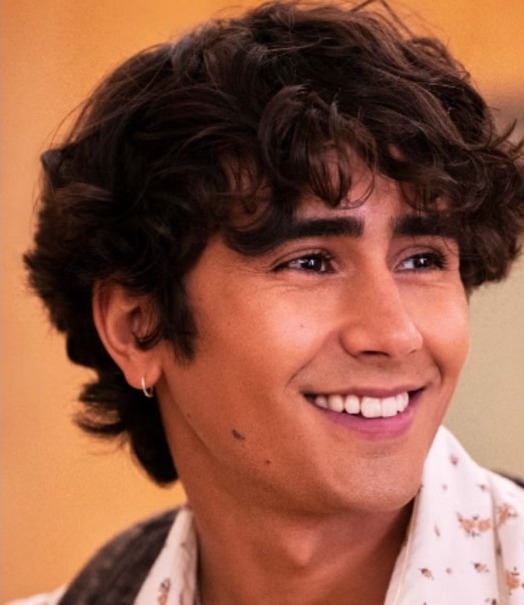
(Micheal Cimino from Never Have I Ever)
So imagine my surprise when I look Ky Markham up to see how other people see him AND ALL I SEE ARE WHITE MEN 😭
Like, even as a middle schooler, Ky was NEVER white in my head. So, looking at the picture used on fandom wiki:

And the other fancasts/fan art of him:


(Honarable mentions for fancasts include Jacob Elordi, Logan Lerman, Zac Efron, and Drew Roy)
Was honeslty a big shock for me. Now don't get it twisted, I'm not saying there's anything wrong with Ky being widely believed to be white, I'm just saying that I was so surprised that it seems I was the only one who pictured him that way.
Anyhow, in my head all I can see is Micheal Cimino as Ky, and Maitreyi Ramakrishnan as Cassia now.
0 notes
Note
Hi there! I was wondering if I could get a family template for Katie Stevens? I just need parents and brothers. Thanks <3
Hello there! I'll add in my to-do list, but I'm gonna give you some options already :)
Mother:
Maxim Roy (43-51)
Ally Sheedy (53-61)
Demi Moore (50-60)
Elizabeth Reaser (40-48)
Father:
Ethan Hawke (44-52)
Jeffrey Dean Morgan (49-57)
Mark Ruffalo (47-55)
Paul Rudd (46-54)
Brothers:
Wolfgang Novogratz (18-26)
Deaken Bluman (18-27)
Nicholas Braun (27-35)
Logan Lerman (23-31)
(cib)
0 notes
Note
mwm?

steven yeun, yahya abdul-mateen ii, kwak dong-yeon, kieran culkin, tom holland, daniel henney, oscar isaac, finn cole, logan lerman, aaron taylor-johnson, paul mescal, raymond ablack, dev patel, ryan gosling, sean teale, aditya roy kapur, aldis hodge, hritrik roshan, rege jean page, chris pine, bie thassapak hsu, gong yoo, keith powers, siddharth malhotra, can yaman, chris evans, kento yamazaki, jon bernthal, paul rudd, riz ahmed, jackson wang, danny ramirez, glen powell, ahn hyoseop, bright vachirawit, robert pattinson, daniel ezra, fukushi sota & fabien frankel. come to mind, members feel free to add your mwm !
0 notes
Photo

𝐖𝐄𝐋𝐂𝐎𝐌𝐄 𝐓𝐎 𝐀𝐑𝐂𝐀𝐃𝐈𝐀, nathan rogers, benjamin parker, violet harper-todd, howard rogers, billy kaplan & wylder wilson ! the face claims of rudy pankow, elliot fletcher, jessie mei li, lucas till, logan lerman, sadie sink are now taken. you have 24 hours to send in your account or your role(s) will be reopened. check out the new member checklist and have a look around!
⟨ rudy pankow. cis male. he / him. 22. ⟩ LOADING FILES … did you know STEVE ROGERS & PEGGY CARTERS’ child’s name is NATHAN ROGERS ?! i’ve seen them around town listening to 100 BAD DAYS by AJR ! they seem to be quite adventurous, but also impulsive, but it makes sense given they are a SECOND YEAR at ARCADIA UNIVERSITY. i’d watch out for them, though, official files say they’re an ENHANCED HUMAN skilled in ESPIONAGE, SUPER SPEED, SUPER STRENGTH & SUPERHUMAN REFLEXES. no surprise there ! ( admin saturn )
⟨ jessie mei li. demi woman. she / they. 26. ⟩ LOADING FILES … did you know JASON TODD & ROY HARPERS ( ADOPTED )’ child’s name is VIOLET HARPER-TODD ?! i’ve seen them around town listening to MIDDLE FINGER by BOHNES ! they seem to be quite skilled, but also hot-headed, but it makes sense given they are a BARTENDER at THE MELTING POT. i’d watch out for them, though, official files say they’re a HUMAN skilled in WEAPONS MASTERY, HAND TO HAND COMBAT & ESPIONAGE. no surprise there ! ( admin saturn )
⟨ elliot fletcher. trans man. he / him. 24. ⟩ LOADING FILES … did you know PETER PARKER & MJ WATSONS’ child’s name is BENJAMIN HARRY PARKER ?! i’ve seen them around town listening to GOLDEN by HARRY STYLES ! they seem to be quite focused, but also naïve, but it makes sense given they are a GRAD STUDENT at ARCADIA UNIVERSITY. i’d watch out for them, though, official files say they’re a MUTANT skilled in HEIGHTENED SENSES, SPIDEY SENSE, HEALING FACTOR, SUPERHUMAN ABILITIES & WALLCRAWLING. no surprise there ! ⟨ admin saturn ⟩
⟨ lucas till. male. he/him. 25. ⟩ LOADING FILES … did you know STEVE ROGERS AND PEGGY CARTER child’s name is HOWARD ROGERS ?! i’ve seen them around town listening to CAN'T HELP FALLING IN LOVE by ELVIS ! they seem to be quite determined, but also stubborn, but it makes sense given they are a JUNIOR FIELD AGENT at SHIELD. i’d watch out for them, though, official files say they’re a HUMAN skilled in HAND TO HAND COMBAT, MARKSMANSHIP, ESPIONAGE, INTELLIGENCE. no surprise there ! (Admin Jupiter)
⟨ logan lerman. cis-male. he/him. 23. ⟩ LOADING FILES … did you know WANDA MAXIMOFF'S & VISION'S child’s name is WILLIAM "BILLY" KAPLAN ?! i’ve seen them around town listening to I DON'T WANT TO TALK by WALLOWS ! they seem to be quite intuitive, but also introverted, but it makes sense given they are a EMPLOYEE at STAN'S COMIC SHACK. i’d watch out for them, though, official files say they’re a MUTANT skilled in MAGIC. no surprise there ! ⟨ precious, 27, est, she/her, n. ⟩
⟨ sadie sink. cis female. she/her. 20. ⟩ LOADING FILES … did you know WADE WILSON AND SHIKLAH’S child’s name is WYLDER WILSON ?! i’ve seen them around town listening to PUNK TACTICS by JOEY VALENCE ! they seem to be quite passionate, but also facetious, but it makes sense given they are a SOPHOMORE at ARCADIA UNIVERSITY. i’d watch out for them, though, official files say they’re a SUCCUBUS skilled in SHAPE-SHIFTING. no surprise there ! ⟨ piper, 20, cst, they/them, none. ⟩
0 notes
Text
BLOOD MONEY IN THE RICH, CLUBBY WORLD OF HORSEMEN, SOME GREEDY OWNERS HAVE HIRED KILLERS TO MURDER THEIR ANIMALS FOR THE INSURANCE PAYOFFS
On the rainy night of Feb. 2, 1991, in despair over the prospect of causing the death of a horse by breaking its hind leg with a crowbar, Tommy (the Sandman) Burns sat in a bar outside Gainesville, Fla., and got drunk on gin and tonic. "Really wasted," Burns recalls. "I had never done one like that before."
For a decade the cherubic 30-year-old had made a sporadic living as a hit man hired to destroy expensive horses and ponies, usually so their owners could collect on lucrative life-insurance policies. But no owner had ever ordered Burns to dispose of a horse by breaking one of its legs—that is, by causing a trauma so severe that a veterinarian would be forced to put the animal down with a lethal injection.
Burns's preferred method of killing horses was electrocution. It had been so ever since the day in 1982 when, he says, the late James Druck, an Ocala, Fla., attorney who represented insurance companies, paid him to kill the brilliant show jumper Henry the Hawk, on whose life Druck had taken out a $150,000 life-insurance policy. In fact, says Burns, Druck personally taught him how to rig the wires to electrocute Henry the Hawk: how to slice an extension cord down the middle into two strands of wire; how to attach a pair of alligator clips to the bare end of each wire; and how to attach the clips to the horse—one to its ear, the other to its rectum. All he had to do then, says Burns, was plug the cord into a standard wall socket. And step back.
"You better get out of the way," says Burns. "They go down immediately. One horse dropped so fast in the stall, he must have broken his neck when he hit the floor. It's a sick thing, I know, but it was quick and it was painless. They didn't suffer." And it was, for the collection of insurance claims, an ideal method of execution. According to doctors at the University of Pennsylvania's New Bolton Center, one of the nation's leading large-animal hospitals, even the most-experienced pathologist would be unlikely to detect signs of death by electrocution—unless, perchance, the pathologist was looking for it and the clips happened to leave singe marks. Many of the horses Burns electrocuted were assumed to have died of colic.
So Tommy Burns (a.k.a. Timmy Robert Ray), who had worked around horses since he had run away from home in Connecticut at the age of 15, became a serial killer of horses and got away with it for 10 years. According to federal agents, Burns destroyed some 20 horses, mostly show jumpers and hunters, on the show-horse circuit from Florida to Vermont to Illinois. "In 1989 it got crazy," Burns says. "I killed three horses in one week." Indeed, toting the canvas athletic bag in which he hid his deadly wires, Burns became such a regular presence among the wealthy show-horse crowds that he earned a sobriquet of which he would remain, until recently, unaware. "People knew what was going on," says a prominent West Virginia horsewoman. "When Tommy arrived at a show, they would say the Sandman was around. They knew a horse would be put to sleep." In almost every ease, something about a horse—its performance, its health, its age—had made the unthinkable occur to its owner.
By that night of Feb. 2, Burns had, by his own admission, run "hard and wild for 10 years." A few days earlier he and his associate, Harlow Arlie, had driven a vanload of show horses from their base in northern Illinois to Canterbury Farms in Florida. Among the equine passengers was Streetwise, a sporty chestnut jumper with a white stocking on each leg, a blaze on its face and a $25,000 insurance policy on its life. Burns has told federal investigators that the 7-year-old gelding's owner, Donna Brown, a prominent horsewoman on the clubby show-horse circuit, had hired him for $5,000 to arrange a fatal accident for Streetwise. According to Burns, the insurance policy did not cover death by colic—Streetwise had a history of colic, a life-threatening condition in a horse—so Brown insisted that he break the animal's leg.
"I don't want to break his leg," Burns, at the bar near Gainesville, sang to Arlie in his executioner's song. "I'm not into that."
"I'll do it," Burns says Arlie told him. "For half your fee."
The two men left the bar and returned to Canterbury. Burns figured the rain that night would make the perfect alibi: They were loading Streetwise into the van when the horse slipped, fell off the ramp and broke its leg. At about 10:10 p.m., after helping to load three other horses into the van for a trip south to West Palm Beach, Burns stood in the middle of a brightly lighted lot and held a lead shank tethered to Streetwise's halter.
Unbeknownst to Burns, investigators for the Florida Department of Agricultural and Consumer Services, acting on a tip, had been following his van ever since it had rolled into Florida, and on this night they were staking out the farm. One of the investigators, Harold Barry, lay flat and still on the top of a beat-up horse trailer less than 100 yards away, watching helplessly as the dark, rain-swept scene suddenly turned from eerie to macabre.
The powerfully built Arlie appeared behind Streetwise's right rear leg, a crowbar in his hand. Arlie swung the bar like a baseball bat, and agents across the highway could hear a crack. Neighing loudly, in a high, panicky scream, Streetwise began thrashing on his dangling leg, fell to the ground as a stunned Burns hung onto the lead—"I'd never seen anything like it; the horse went into shock," he says—and then scrambled back to his feet. The keening horse tore the shank from Burns's hand and took off around the stable, disappearing in the night, falling again, bellowing, only a sound now, an echo behind the barn now, in the dark now, in the quiet rain.
Tommy Burns punched numbers on a cellular phone, calling Donna Brown in West Palm Beach to inform her of events. Meanwhile Arlie informed Carlie Ferguson, president of Canterbury Farms, who summoned a vet. The vet phoned Brown, and on her instructions he called the insurance company on its 800 emergency number. Of course, the company authorized immediate euthanasia for the suffering animal. Moments after arriving on the scene, the vet put the horse down.
Burns and Arlie did not get far. After the death of Streetwise, Burns fired up the rig and took off. But two miles down Route 26, Florida Highway Patrol cars converged on the van from all directions. "They were even coming out of dirt roads," says Burns. He made a run for it, but he was quickly subdued, handcuffed and arrested at shotgun point. "What were you guys doing at the farm?" a cop yelled in Burns's ear.
They had him cold. Agricultural investigators found the crowbar and the electrocution wires in Burns's white pickup. An accomplice who had helped to load the horses at the scene, Chad Sondell, said in a sworn statement to state investigators that Burns and Arlie had told him they were to be paid $5,000 by Brown to kill Streetwise. Arlie confirmed Sondell's story, according to police reports, and admitted having struck Streetwise with the crowbar. Arlie soon pleaded guilty to charges of insurance fraud and cruelty to animals, and he eventually served six months of an 18-month sentence before being paroled.
Federal authorities had been investigating Burns for months—it was they who had tipped the Florida agricultural department that the Sandman was heading south with a potential victim in his van—and Burns's arrest turned out to be the major break in what had become a difficult collection of cases to crack.
Underscoring the importance of the arrest, an FBI agent and a top Justice Department prosecutor from Chicago, Steve Miller, descended on Gainesville only hours after Burns was taken into custody. Caught in the act, incriminated by Arlie and Sondell and facing certain conviction and a jail term on charges of insurance fraud and cruelty to animals. Burns decided to cooperate with federal prosecutors. He spent three weeks in jail, and after the Alachua County Circuit Court finally released him on $100,000 cash bail—under an order that he stay away from horses—he returned to Chicago, where he began cooperating with a grand jury that has been looking into the killing of horses for insurance money.
Burns quickly unraveled his sordid tale to law-enforcement officials, giving names, places and dates from his history as a professional horse-killer and a co-conspirator in cases of insurance fraud. Burns faces sentencing Dec. 14 in the case involving Streetwise, and he expects the feds to seek leniency on his behalf on grounds that he is a key government witness in what has become an investigation of stunning scope.
"Tommy Burns turns out to be the tip of the iceberg," one federal agent says. In the next few weeks, as agents from the FBI, the Internal Revenue Service and the Bureau of Alcohol, Tobacco and Firearms wind up their investigations, sources estimate that as many as 40 owners, trainers, veterinarians and riders will be indicted on various charges related to the killing of horses for insurance payments. Law-enforcement officials are piecing together felony fraud cases against the owners and trainers who hired Burns, and they're tracking down itinerant stable hands and grooms who can confirm details of the killings that the Sandman carried out for their bosses. The inquiries have led agents on a long, circuitous trail from one scene of electrocution to the next, and along the way investigators have picked up leads on other insurance-related deaths not involving Burns and on still other crimes that include suspicious stable fires and the fraudulent sale of overvalued horses.
In the 21 months since Burns's arrest, investigators have developed hard evidence that such crimes have not been confined to the show-horse business and that Burns is not the only hit man working expensive stables. During that time the investigators have concluded that killing horses for insurance claims is business as usual at all levels in the world of show horses.
This phenomenon is hardly new, nor is it confined to jumpers and hunters. Twenty years ago, at some prominent thoroughbred racetrack barns, animals were dying at such an alarming rate that insurance companies were refusing to insure the trainers' horses. At one Belmont Park barn where horses were expiring mysteriously in the night, cynical grooms would show up in the morning and ask, "Anyone die last night?"
Veteran insurance adjusters say, however, that the number of suspicious claims by horse owners has increased dramatically in the years since the 1986 Tax Reform Act eliminated performance horses as depreciable assets. That "reform" and the anemic state of the economy cut the bottom out of the horse business, leaving a cash-starved industry with farms and stables struggling desperately to stay afloat.
Unlike paintings by Renoir or baseball cards bearing pictures of Honus Wagner, horses experience wild, often unforeseen fluctuations in value. Say, for instance, that a thoroughbred investor spends $500,000 for a well-built, well-bred yearling, insures him for that sum and sends him off, as a 2-year-old, to a racetrack trainer. And say that the trainer then informs the owner that the colt is so slow that he couldn't beat a $15,000 maiden claimer. Or that he is an ill-tempered, untrainable rogue. Or that he is about to bow a tendon and will never race. The humane sportsman might wince and take the loss, but more than a few others would make other arrangements. "The insurance is there, and it is very tempting," says one federal agent.
Over the last few years, says Harvey Feintuch, a New York lawyer who specializes in the investigation of equine insurance claims, "we have had a very, very significant increase in the number of claims that just don't look right."
Given the current economic climate, the sudden deaths of expensive, stall-bound horses tend to raise suspicions, even at the highest levels of the horse business. A widely respected freelance turf writer, Carol Flake, sent shudders through the thoroughbred industry when, in a meticulously reported article in the February 1992 issue of Connoisseur magazine, she raised the possibility that the death of Alydar—one of the most popular racehorses of modern times and one of the world's prepotent stallions—was not an accident (box, page 22).
In the investigation of thoroughbred fatalities, federal agents have found more than mere suspicions. In Brooklyn and South Florida, the feds say, they recently uncovered an insurance scheme that led to the death of one horse, a son of Seattle Slew named Fins, and nearly resulted in the death of another, Cutlass Reality, a New York stakes winner of $1.4 million. Prosecutors say that the scheme involved Victor Arena, the reputed head of the Colombo crime family; Howard Crash, a New York securities broker who is under indictment for bribery; and Larry Lombardo, a licensed owner and trainer of thoroughbreds who has been indicted on federal charges that he killed Fins "while making the death appear to be due to natural causes." Sources speculate that the horse was injected with parasitic bloodworms that brought on a case of thromboembolic colic, a fatal illness.
According to a 21-count indictment handed up in Miami on Aug. 4, Lombardo purchased Fins for $7,500, inflated the horse's value to $400,000 through a series of sales of phony shares, insured Fins for that amount and then collected on the policy after the horse died. Ron Rubinstein, Lombardo's defense attorney, claims that Fins died of natural causes and argues that the colt, at $400,000, was not overvalued as a breeding prospect. But Seth Hancock, the president of Claiborne Farm, which bred Fins and has been in the thoroughbred-breeding business for 80 years, said that Fins was a big, crooked-legged colt who couldn't run a lick.
Lombardo is also charged with conspiring to kill Cutlass Reality, the terrific winner of the 1988 Hollywood Gold Cup (and conqueror of the Horse of the Year, Alysheba), in an alleged insurance-fraud scheme. Crash and his former business associate Mark Hankoff—the two key government witnesses against Lombardo, according to sources close to the case—owned the horse in partnership with Lombardo and several others. What saved Cutlass Reality is unclear, but the hit was never made. "Somebody got scared and backed out," an FBI agent says. What is clear, according to the sworn testimony of an FBI agent involved in the case, is that Crash, Lombardo and Arena would have each received $1 million from the insurance settlement if the horse had been killed. Instead, Cutlass Reality will be standing stud in California next spring, servicing mares at $5,000 a pop—and that beats colic.
While the company that insured Fins had some doubts about the horse's stated value and was suspicious of the timing of the claim, which was made six months after the purchase of the policy, it nonetheless sent the $400,000 check to Lombardo and his cohorts. (Lombardo goes on trial next March 22; if convicted, he may be forced to make restitution to the insurance company.) Increasingly, however, insurance companies are balking at paying suspicious claims and are fighting them in court. The companies are also investigating suspicious claims more assiduously, looking for signs of fraud such as the bogus inflation of a horse's value and the concealing of ailments and infirmities. "We began to take more time and more care," says Feintuch, adding that Lloyds of London and other carriers have toughened their approach to paying claims.
Lloyds's increased vigilance dates back eight years to a case that rocked the highest levels of the thoroughbred breeding world and drove some of its biggest players to hide behind the woodshed in embarrassment. When, on March 25, 1984, an imported English horse named Pelerin died of vitamin D toxicosis shortly after ending his inconsistent career by finishing out of the money in a race in Louisiana, the underwriters of the insurance on the horse, all associated with Lloyds, had reason to be skeptical of the $1.45 million policy that Kentucky horseman Harold Snowden held on his half of the animal. Not only did Pelerin appear to have been poisoned, as the term toxicosis implies, but his value (Snowden and a partner had purchased him for $2 million) had dropped sharply in light of his less-than-stellar racing career.
Snowden, co-owner of the Stallion Station farm and breeder of two Kentucky Derby winners, Dust Commander (1970) and Bold Forbes (1976), had been one of the most active players in the business, the syndicator of more than 100 stallions and a prolific insurer of horses. In a gesture aimed at staying in Snowden's favor, the underwriters offered him $1 million—exactly what he had paid originally for half of the horse—to settle the claim. Snowden held out for $1.35 million. The carriers refused to budge, and Snowden took them to court. It was the first time that an equine insurance company had opposed someone of his stature.
Snowden came armed with 10 letters from fellow horsemen, all dated before Pelerin's death, in which each breeder expressed interest in buying a share in the horse for $75,000 upon his retirement to stud. At the 40 shares Snowden said he would have sold, Pelerin's claimed value now rose to $3 million. Among the nationally known breeders who sent letters were Warner Jones, then chairman of the board of Churchill Downs; J.T. Lundy, later head of Calumet Farm; and the late Leslie Combs II, then the aging pillar of Spendthrift Farm.
Snowden looked as if he would win in a gallop when—in a maneuver Perry Mason would have envied—Feintuch, acting on the underwriters' behalf, called two witnesses who destroyed Snowden's case and earned him the glowering wrath of the judge, Henry Wilhoit. One of the witnesses, a secretary for breeder Dwayne Rogers, testified that she had typed Rogers's letter to Snowden. The problem was that she had not begun working for Rogers until 14 months after Pelerin's death. She explained to the court that Rogers told her to backdate the letter to Jan. 5, 1984, two months before the horse's demise. The other witness, a receptionist at Spendthrift Farm, testified that she had typed Combs's letter to Snowden but that she did not go to work at Spendthrift until July 1984, by which time Pelerin had been dead four months. She testified that Combs had her type the backdated letter late one day, after everyone else had left the office.
Snowden was in trouble. His lawyers withdrew on him, leaving him to face a furious Wilhoit. Snowden hired F. Lee Bailey to put the toothpaste back in the tube, but that did no good. After a third horseman admitted that his letter was a fraud, Wilhoit concluded that "all 10 letters had been backdated." While never addressing the question of whether Pelerin was poisoned, Wilhoit charged that "a fraud had been practiced upon the court." Not only was Snowden out the $1 million that Lloyds had offered in the original settlement, but he was also left with a dead horse, a court-ordered judgment against him for $194,131.12 (to cover court costs and the amount Lloyds spent in legal fees fighting his claim) and bills from his own departed lawyers, not to mention from Bailey.
While the thoroughbred business has had its sorry share of cases involving insurance fraud, it has experienced nothing like the maelstrom that Burns is about to set spinning in the show-horse business. Sources say that, based on Burns's testimony, some of the most celebrated figures in the game are targets of the grand jury probe. They include Donna Brown and her husband, Buddy Brown, a member of the U.S. equestrian team at the 1976 Olympics and still one of the nation's leading performers in Grand Prix jumping. Not only does Donna face allegations in connection with the death of Streetwise, but she and Buddy are also under investigation for the death of Aramis, another show jumper. According to sources, insurance records show that Aramis, while insured for $1 million, died under suspicious circumstances. (No charge has been tiled in either case.)
Asked about the federal investigations into the deaths of two of the Browns' horses, the couple's lawyer, Mark Arisohn, a Manhattan criminal defense specialist, says, "I wish I could give you a response. We will plead not guilty. Our defense will be established in the courtroom."
Another horseman who has attracted the attention of investigators is George Lindemann Jr. of Greenwich, Conn., who has emerged as one of the nation's most accomplished equestrians since graduating from Brown University in 1986. Lindemann has ridden his stable of gifted show jumpers to victory in some of the Grand Prix circuit's richest and most prestigious events, but federal investigators are more interested in what role, if any, he played in the December 1990 death of his champion hunter Charisma.
Tommy Burns has told authorities that Charisma was insured for $400,000 when Burns electrocuted him for Lindemann in a stall at the Lindemann family's Cellular Farms, in Armonk, N.Y. According to another source, Lindemann had purchased Charisma for $250,000 in 1989. Minus Burns's alleged $35,000 fee for the hit, the insurance payoff would have left Lindemann with a $115,000 profit. It also left investigators wondering why, if Burns's allegations are true, the enormously rich Lindemann—the name Cellular Farms refers to cellular phones, the source of the family's wealth—would take so big a risk for so small a sum.
Asked about the inquiry into Charisma's death, Lindemann referred all questions to his lawyer, Elaine Amendola, who said, "Why should I be talking about this when George has the FBI hanging all over his neck?" She added, however, that "George is completely innocent."
Additionally, federal agents are looking into the possible involvement of veterinarian Dana Tripp, also an accomplished equestrian, in the death of Streetwise. Florida investigators say that Tripp's red pickup truck—with DANA TRIPP, D.V.M. emblazoned on its doors—was part of Burns's caravan as it made its way toward Canterbury Farms. It was Tripp, according to sources cited in the police report, who recommended to Donna Brown that she hire Burns to stage Streetwise's accident. Prosecutors have phone records revealing Tripp's numerous conversations with both Brown and Burns in the two days leading up to the death of Streetwise. Tripp has refused to respond to SI's questions about the matter.
The Sandman's trail has led federal agents to stables in at least eight states. Sources say that Paul Valliere of North Smithfield, R.I., one of the show circuit's leading trainers, is under federal investigation. Burns has told authorities that Valliere hired him to destroy Roseau Platiere, one of Valliere's own horses. Burns says he electrocuted the animal one night in its stall at a horse show in Sugarbush, Vt. Reached at his Acres Wild Farm in Rhode Island, Valliere refused to answer any questions. Seeking corroboration of Burns's Sugarbush story, SI spoke to a woman who said that she had picked Burns up at the airport in Burlington, Vt., and taken him to the horse show. (The woman said she had given this information to the FBI.) SI also spoke to others who described Roseau Platiere as vigorous and healthy in the hours before Burns's visit. Burns says he has federal agents that Roseau Platiere was one of the three horses he destroyed in 1989 during the busiest week of his career as a contract killer.
Agents are also following up Burns's account of the death of a show horse named Rainman. His owner, Chicago businessman Allen Levinson, collected a $50,000 insurance policy on Rainman's death, but he denies any wrongdoing. "I have never heard of Tommy Burns," Levinson says. "I was trying to sell that horse. I had it sold for more money than the insurance policy. There was a complete autopsy."
For the agents, investigating horse killings has been a difficult, unfamiliar experience. Only rarely has there been a body on which to perform a necropsy, as there was in the case of Streetwise; the carcasses usually have been lost to the rendering plants. So this has been in good part a paper chase. In some cases agents have served subpoenas on claims adjusters who had long before paid the owners for their losses. But the owners' files and personal financial records have been valuable, frequently confirming details of Burns's story of a horse's death—including in some cases the exact barn and stall where it occurred.
In fact, investigators have been struck by the ease with which they were able to follow the paper trail that some of Burns's clients left behind. Burns's presence on the circuit and the things that tended to happen when he was around became so accepted that he was treated like the feedman or the farrier. His employers frequently paid him with personal checks and sometimes with cashier's checks purchased at their banks.
Even federal agents, who thought they had seen everything, were shocked by the insouciance of some of those who dealt with Burns. Burns recalls one woman's approach to him at a horse show: "She said, 'Do you think you could kill my horse for $10,000?' So I did. She bought another horse with the insurance money and came up to me two months later and asked me to kill her new horse. She didn't like it."
There is a troubling banality about the evil at work in these cases. "We are dealing with a way of life here." one investigator said. "These people thought they had some sort of right to do these things."
Largely because of the nature of the crime ("These animals are so vulnerable that I'd compare it almost to hurting children," says Florida agriculture commissioner Bob Crawford), some law-enforcement officials have pursued the investigation with an inspired intensity. "This is a case where you can lose your detachment," says one federal agent. "These were beautiful animals. They were standing there helpless in their stalls. Most of these people had plenty of money. So you get outraged. And you work a little harder."
Burns knows better than anyone how the horses were standing in their stalls, wearing their halters and alligator clips and watching him curiously, like deer in a clearing, as he stepped outside and moved for the socket. He wants it known, as he has been telling the feds, that he wasn't there on his own. "I was not alone in all of this," he says. "I feel terrible about what I did. But I did not advertise. I did not do any sales calls. People found me and came to me. Very important people. Very wealthy people. They came to me because they somehow knew that I might be willing to do something they wanted done. They wanted these horses dead."
What the clients wanted, the clients got. However well he warbles, Burns knows he will do some jail time, just as he knows there will be no escaping, ever, what he did for so long with his life. There's no escaping that night in Florida, in the dark, in the rain, and the sight of Arlie with the crowbar, and the crack and the screams, the horse falling and thrashing, rising and running. Burns can still hear the cops yelling at him after his arrest: "You killed all those horses, and we know you did!"
"They were right," says Tommy Burns.
They always will be. That is his sentence.
FIVE ILLUSTRATIONS
ANASTASIA VASILAKIS
Arlie swung the crowbar like a baseball bat, and agents watching from across the highway could hear a crack.
According to federal agents, Burns destroyed some 20 animals on the show-horse circuit from Florida to Vermont to Illinois.
Burns's presence became so accepted that he was treated like the feedman or the farrier. His employers frequently paid him with personal checks.
Over the last two years agents have concluded that killing horses for insurance payoffs is business as usual in the world of show horses.
BY
WILLIAM NACK
#saratoga race course#saratoga ny#the inn at saratoga#gideon putnam#adelphi hotel saratoga#horse racing saratoga#ella olivieri felcher#horsewoman#todd olivieri#allison olivieri#scott olivieri#anthony olivieri#anthony lerman#roy lerman#dennis felcher#williamsa islAND#TURNBERRY ISLE#the breakers#bALLENISLES#FRENCHMANS CREEK#THE BILTMORE#STACY OLIVIERI FLORIA#STACY OLIVIERI FLORA#HISTORIC PRESERVATION NY#HISTORIC PRESERVATION ROCHESTER#THE DARLING OF PRESERVATION#OVERBILLING#1+2 = 25.#AN UNREFINED WOMAN#BAD BREATH
2 notes
·
View notes
Text
What was your bisexual awakening and why was it specifically the 2006 masterpiece Hoot.
#literally young brie larson and cody linley were everything i needed#logan lerman was also there#but his name was roy so he was off the table
7 notes
·
View notes
Text
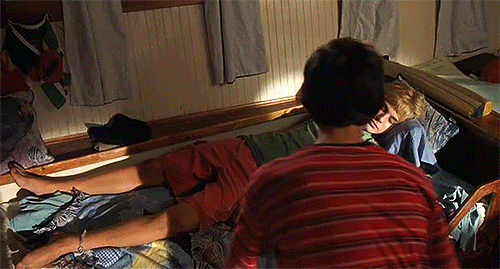
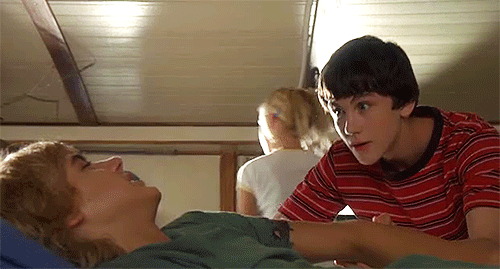
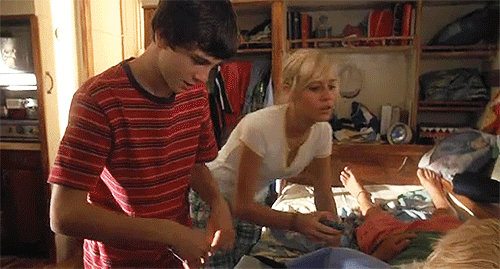
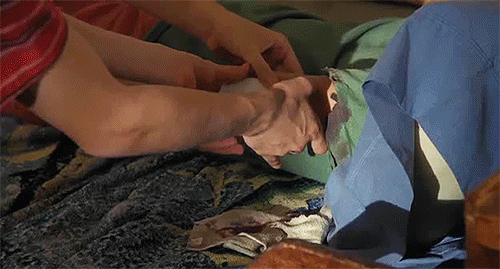






Hoot (2006)
#had to gif one of my fav whump scenes from childhood#whump#whumpedit#hoot#movies#cody linley#mullet fingers#logan lerman#roy eberhardt#beatrice leep#brie larson#my gifs#mod post#dog bite#infection#fever#sick#pain#bitten#caretaking#first aid#bandages#collapsing#weak#carried#hospital#fever check#hand on forehead
111 notes
·
View notes
Text
Dude Logan Lerman as Roy Eberhardt in Hoot was peak Percy Jackson energy. The sass, amazing.
#hoot#logan lerman#roy Eberhardt#percy jackson#hoot came out in 2006 while the lightening theif was first published in 2005 so there was no way it would have worked but god damn#it would have been amazing
17 notes
·
View notes
Text
Titans Fancast
Nightwing / Dick Grayson - Aaron Taylor-Johnson

Troia / Donna Troy - Eiza Gonzalez

Flash / Wally West - KJ Apa

Arsenal / Roy Harper - Garrett Hedlund

Tempest / Garth - Logan Lerman

Bumblebee / Karen Beecher - Nathalie Emmanuel
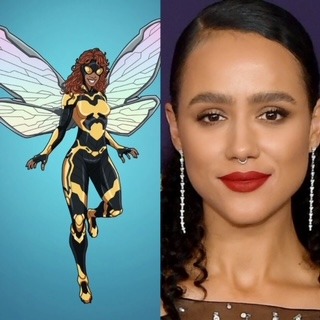
Hawk / Hank Hall - Charles Melton

Dove / Dawn Granger - Emma Watson
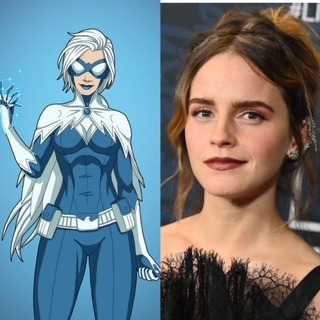
Tigress / Artemis Crock - Hailee Steinfeld

Green Lantern / Kyle Rayner - Steven Yeun

Starfire / Koriand’r - Emrata
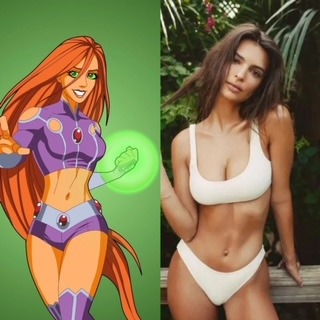
Raven / Rachel Roth - Aubrey Plaza

Beast Boy / Garfield Logan - Dylan O’Brien

Cyborg / Victor Stone - Michael B. Jordan

Terra / Tyra Markov - Chloe Grace Moretz

#dc#dc comics#dc universe#DC Headcanon#dc fancast#DCU#dcau#dceu#dcamu#teen titans#titans#hbo titans#dick grayson#Donna Troy#Wally West#roy harper#Garth of Atlantis#Karen Beecher#Hank Hall#Dawn Granger#artemis crock#Kyle Rayner#korri ander#Rachel Roth#Gar Logan#garfield logan#victor stone#tyra markov#robin#nightwing
77 notes
·
View notes
Text
🐝 hiya ! i’m taylor (she/they) twenty1 & in the est timezone ! with school coming to a close i’m looking for some more plots ! i’d prefer 2 write on discord but will also write on tumblr ! not a stickler on length or replying quickly sometimes i’m fast others not so much feel free 2 nudge me if it’s been a bit though ! i love angst and all kinds of ships ! if you are interested in writing i have a ton of stuff below so please give this a like or message me ! please be over eighteen if you interact w this post !
faceclaims: jessie mei li, alexa demie, freddy carter, natalia dyer, evan mock, savannah smith, archie renaux, evan rachel wood, ryan potter, aubrey joseph, danielle galligan, liz gillies, chella man, hunter schafer, aubrey plaza, zion moreno, adeline rudolph, daniella alonso, ana de armas, cody christian, kiowa gordon, logan lerman, rege jean page, sonoya mizuno, sophia taylor ali, samantha logan, anya chalotra, and literally anyone in this tag
opposites: ben barnes, archie renaux, brett dalton, mia goth, alperen duymaz, ruth negga, gugu mbatha raw, avan jogia, amita suman, adam brody, tanaya beatty, khadijha red thunder, ewan mcgregor, dev patel, diego luna, kristen stewart, anya taylor joy, peter gadiot, laura harrier, joe keery, evan mock, alberto rosende, aldis hodge, zion moreno, andrew garfield, shay mitchell, gavin leatherwood, gemma chan, oliver jackson cohen, jd pardo, dylan o’brien, anna diop, and literally anyone in this tag
plots: fake dating especially in holiday settings, enemies to lovers, childhood friends to lovers, wildwest westworld inspired plots, the last of us but we include ocs, retold greek gods, wolfstar, various other marauders stuff, sam/deena from fear street, kaz/inej from six of crows, bucky/natasha from marvel, jason/roy from dc, jason/rose from dc, peter/gwen from marvel, steve/nancy from stranger things, rich trust fund babies, mermaid/pirate romance, single parent and their kids cute kindergarten teacher, divorced couple trying to work things out, gay pirates and/or cowboys, baby angst, aged up katniss/peeta from the hunger games, literally just taylor swift’s folklore, spies bonus points for rival spies, anything where i can use my hunger games ocs, period piece longing, anything inspired by 10 things i hate about you or 13 going on 30, college aged degrassi characters, let me play alina starkov please, supernatural plots, rick and evelyn from the mummy!!!! and anything else not mentioned in this tag
17 notes
·
View notes
Text

i’d love to see ...
rahul kohli as vision, ryan potter as billy kaplan, rudy pankow as teddy altman, diego luna as clint barton, quintessa swindell as cassie lang, joy sunday as hazel isley, aarif rahman as damian wayne, michael trevino as jon kent, aj clementine as valeria richards, alycia pascual pena as america chavez, park chaeyoung as karolina dean, richard madden as alex summers, brianna marquez as gert yorkes, natalie dormer as betsy braddock, emmy rossum as lorna dane, jessica chastain as pepper potts, gemma chan as carol ferris, jan cina as richard grayson, anna diop as koriand’r, ian anthony dale as jason todd, keilani elizabeth rose as alani ryan, eddie spears as roy harper !
...
alex meraz as a child of dorma + namor [ a few hundred years old ], hannah marks as a child of kurt wagner, jesus castro as a child of wanda maximoff + steve rogers, cher lloyd as a child of richard grayson + barbara gordon, anok yai as a child of t’challa + ororo munroe, jonathan daviss as a child of okoye, auli’i cravalho as a child of arthur curry + mera, yalitza aparicio as a child of namora, jasmine villegas as a child of kamar, taija kerr as a child of arthur curry + mera, jahanara rahman as a child of rachel summers, sam talu as a child of madelyn pryor, logan lerman as a child of kitty pryde + peter quill, madelaine petsch as a child of tony stark + pepper potts !
2 notes
·
View notes
Photo
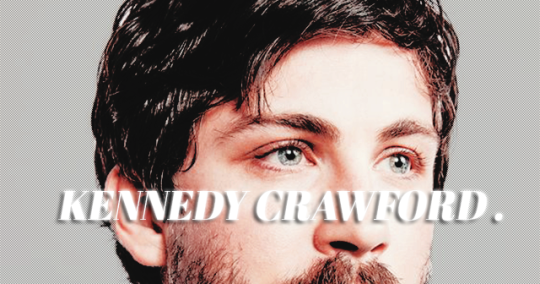
( logan lerman , 29 , cisman , he / him ) * hey , i’m looking for the office of KENNEDY CRAWFORD . they’re the EMPLOYEE who’s known around the office as THE PEOPLE - PLEASER , if that helps ? not to be a gossip , but i’ve heard that they’re CHARISMATIC but RUTHLESS , is that true ? i also heard that they’re the one who STAYS UP ALL NIGHT AND ENDS UP FALLING ASLEEP ON MR . MASTERS' OFFICE . anyways , here’s the coffee they ordered .
hellooo everyone !! this is fleur ( gmt -3 , she / her , 23 ) bringing you a new muse : mr . kennedy crawford . he is one of masters international’s in - house lawyers and i can’t wait to see him interact with everyone here & develop him . under the cut , you’ll find all the info you need while i fix his pages . if you wanna plot , hit the like button here or hmu on discord !!
* ⸻ 𝐋𝐀𝐘𝐄𝐑 𝐎𝐍𝐄 .
name : kennedy thomas crawford .
nickname ( s ) : ken , kenny , kt , kc .
date of birth : april 7 , 1993 ( 28 years old ) .
zodiac sign : aries sun , virgo rising , saggitarius moon .
place of birth : new york city , new york , usa .
occupation : masters international’s in - house lawyer .
education : columbia university .
sexuality : heterosexual .
relationship status : single , not interested .
social status : upper - middle class .
living condition : studio apartment in brooklyn .
height : 180 cm / 6 ft .
weight : 74 kg .
* ⸻ 𝐋𝐀𝐘𝐄𝐑 𝐓𝐖𝐎 .
positive traits : charismatic , good listener , friendly , easygoing , adaptable .
neutral traits : observant , quick - witted , flirtatious .
negative traits : ruthless , jealous , manipulative , easily upset , greedy .
labels : the people - pleaser , the seducer , the know - it - all .
likes : parties and clubs , walking in manhattan late at night , chai latte , white shirts , playing the guitar , late night drives , cats , crime shows and documentaries .
dislikes : rainy days , new york’s traffic , crowded places , cold coffee , long phone calls , babies , small elevator talk , romantic movies .
music : indie rock , rock , hip - hop and r&b .
food : nathan’s hot dogs , sushi , pasta ( aka instant noodles are lifesavers ) , steak / barbecue .
drinks : negronis , vodka , soju , black unsweetened coffee , cranberry juice , black tea with almond milk .
habits : running almost late , clicking his tongue , smirking , tapping his foot .
alcohol ? cigarettes ? drugs ? yes . sometimes . sometimes ( weed , cocaine ) .
character inspirations : frank vernon , roman roy and kendall roy ( succession ) , robert spearing ( industry ) , nate archibald ( gossip girl ) , harvey specter ( suits ) , bobby axelrod ( billions ) , fleabag ( fleabag ) , can’t think of others right now lmao .
* ⸻ 𝐁𝐈𝐎𝐆𝐑𝐀𝐏𝐇𝐘 .
kennedy was born the oldest son of a greedy couple who was rising in their career . his father was also an in - house lawyer for a big corporation while his mother worked in an investment bank . growing up in such an environment , he has always been encouraged to chase his dreams and not let anyone or anything stop him from getting what he wants . from a very young age , he developed skills such as public speaking , strategizing and arguing / convincing people around him . of course becoming manipulative also came in that package . he’s always been ruthless .
a very bright student , kennedy attended columbia university and specialized in corporate law . he was an intern in a top law firm before he applied to masters . after he got in , his goal is now to become general counsel . although it is a challenge , he is confident he will make it , no matter what is needed to get there .
* ⸻ 𝐓𝐈𝐃𝐁𝐈𝐓𝐒 .
very much of a night owl , he struggles to get up in the morning .
he takes the public transportation to work , which surprises a lot of people , considering he sounds like a spoiled asshole sometimes .
his friendliness doesn’t always mean he wants something from you . he loves socializing and considers himself someone who has many friends but also many enemies .
his favorite color is green . it matches his eyes , he says . when it comes to clothes , he prefers neutral tones .
although he is a lawyer , there is a very “ indie ” side to him when he’s out of the office . he likes playing the guitar and going to underground parties and bars .
a massive flirt , it’s a form of cheap entertainment . he doesn’t care for a romantic relationship and avoids that at all costs .
* ⸻ 𝐖𝐀𝐍𝐓𝐄𝐃 𝐂𝐎𝐍𝐍𝐄𝐂𝐓𝐈𝐎𝐍𝐒 .
IN - HOUSE LAWYERS : they could be friends , rivals , frenemies . . . i love some unhealthy competition among lawyers in this firm .
FLIRTATIONSHIP : well , he hits on every pretty girl in the firm basically . this can be kind of a game for them .
UNLIKELY FRIENDS : they belong to different worlds but still get along pretty well . maybe they meet outside master at first and then realize they work for the same company .
SECRET RELATIONSHIP : they’re supposed to hate each other but still are drawn to each other ( can be romantic or not ) .
BEST FRIENDS : kennedy’s go - to people at the company , the ones that he gossips to and shares secrets with .
DRINKING / PARTY BUDDIES : happy hour means these two are gonna meet and make one hell of a mess . and have the time of their lives , of course .
ONE NIGHT STAND : they probably hooked up and it was good , but it’s all a blur when they wake up the next morning at one of their apartments . oh , and they’re late for work .
OTHER DESIRED RELATIONSHIPS : frenemies , enemies with benefits , wingman / wingwoman , someone he is manipulating or vice - versa , leading on , crush ( one - sided or not ) , someone he shares a secret with . or anything , really !!
19 notes
·
View notes
Photo

x cherry flavored
husband wanted!
this is quite an open request for annie's husband, his last name is leander but his first name is open. the two of them met about ten years ago in los angeles where she moved when she decided to cut herself off from her family. he was a bartender at the local college bar that she was going to and he had no idea who she was or who her family was. they hit it off from there and after two years of dating she found out that she was pregnant with their son quinn and after that they got married and none of her family was invited to the wedding.
they've had a healthy marriage for the past couple of years and annie had hid some stuff from him like the fact that she still has so much money from selling her shares of the company. eventually, she told him but still it puts a strain on them every now and then and certainly more now since her older brother had called. annie decided to pick the family up and move them to new york city, due to the urgency of her being needed and maybe her husband isn't exactly a fan of her reconnecting with her toxic family but we'll see how it goes!
other than that he's pretty open, maybe he's a stay at home dad since they're well off or something along those lines. i have logan lerman as he suggested face but feel free to throw some more this way! you can reach me through discord at shiv roy#2155
2 notes
·
View notes
Text
The Three Three Musketeers (or Where The F*ck Did All The Stupid Hats Go)
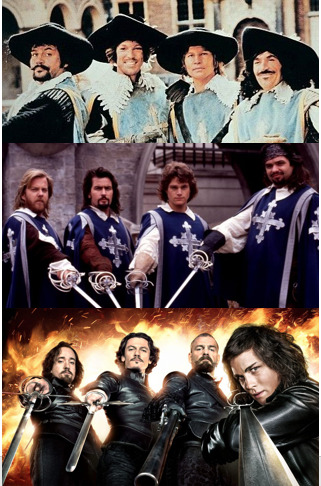
I read The Three Musketeers and then I watched the 1973, 1993 and 2011 adaptations. Which one wins tho?
Adaptation is a fascinating concept, especially of texts which are frequently adapted or parodied. After I rewatched the 2005 Pride and Prejudice I was reminded how weirdly divisive the two dominant adaptations of that book are. A lot of people consider the 2005 to be an inferior betrayal of the 1990s BBC version. I actually prefer the 2005 because I think Matthew McFadyen’s Mr Darcy is a wonderfully complex character. McFadyen imbues Darcy with social awkwardness and anxiety, which Lizzie misinterprets as his pride. To overcome the “Lizzie doesn’t fancy him ‘til she sees his house” debate, director Joe Wright includes a moment where Lizzie glimpses Darcy alone with his sister. He’s comfortable, his body language is completely different, and he’s smiling broadly. That moment really sold me on the entire film because it made Darcy a full character and was a really simple addition that rounded out the story. I still like the 90s version but for me, it’s the 2005 that takes first place. (Although an honourable mention for Pride and Prejudice and Zombies because it is an excellent romp.)
Look: adaptation is always a complicated topic. You can’t untangle one adaptation from another, because it’s pretty rare that somebody adapting a classic text like Pride and Prejudice or The Three Musketeers is not already familiar with existing adaptations. The most recent adaptation of any classic text is not simply an adaptation of that text, but the next step in a flow chart that includes all the previous adaptations and the cultural context of the newly created product. These three adaptations of Dumas’ 1844 novel are all texturally and stylistically very different, and two of them diverge significantly from the original text. What I found truly fascinating was what all of them had in common, and what each new era (these were made at around 20 year intervals) decides to add or remove. What do all these movies agree are the essential parts of the story, and what are some adaptations more squeamish about including from Dumas’ original narrative?
Before we dive in, no I have not seen every single adaptation of the story, that would be a dissertation level of research and I do actually have things to do right now (although, I will admit...not many.) I’m looking at these three Hollywood adaptations because they all had star studded casts (for the era they were made in), they’re all English language, and (crucially) they were all easily available on the internet for me to stream.
What are the essential ingredients of a Three Musketeers adaptation?
Firstly, there should be at least three musketeers. Secondly, D’Artagnan (Michael York 1973, Chris O’Donnell 1993, Logan Lerman 2011) should be a young upstart who is introduced part way through a sword fight. He should also have silly hair. He is also consistently introduced to the musketeers in all three films by challenging them each individually to duels at noon, one o’clock and two o’clock.
The films all maintained some elements of the original “Queen’s Diamonds” storyline, and featured the Queen, Milady and Constance. The characterisation of these three varied a lot.
Our villains in each case are invariably the Cardinal, his pal Rochefort (who always has an eyepatch, although this trope is not in the book and is actually attributable to the way Christopher Lee is styled in the 1973 film), and Milady de Winter. Satisfyingly, at least two of the villains usually wear red because they’re bad. Red is for bad.
All three are very swashbuckling in tone, have elements of physical comedy, and two of them include one of the three valet characters Dumas wrote into the original story, Planchet (1973 Roy Kinnear, 2011 James “ugh why” Corden). They also all bear the generic markings of the movies made during the same era, our 70s D’Artagnan feels like a prototype Luke Skywalker. The 90s version features a random martial arts performer. The 2011 version has CGI and James Corden in equal measure (read: far too much of both.)
What are the big differences?
I’m going to divide this category into three main segments: character, story and style. My own three musketeers, the three musketeers of movie making.
Character
D’Artagnan
D’artagnan in the book comes across as a pretty comical figure. He’s nineteen and there’s something satisfying about how similar Dumas’ caricature of a nineteen year old is to a modern character of the same age. He’s overconfident, has a simplistic but concrete set of morals, and falls in love with every woman he sees. If D’Artagnan were a 2021 character, he’d really hate The Last Jedi, is what I’m saying. He’d definitely have a tumblr blog, probably a lot like this one, but perhaps a scooch more earnest. He really loved The Lighthouse but he can’t explain why. Isn’t it nice to know that awkward nineteen year olds have been pretty much the same for the last three hundred years at least?
In all three films he’s kind of irritating, but at least in the 1973 this feels deliberate. This version has a certain “Carry On Musketeering” quality to it and D’Artagnan is your pantomime principal, he’s extremely naïve and he takes himself very seriously. This is the closest D’Artagnan to the book, and the 1973 is, in general, the film which adheres most faithfully to that source material.
The 1993, which is (spoiler alert) my least favourite adaptation, has Chris O’Donnell as the least likeable D’Artagnan I’ve come across. I’ve only seen O’Donnell in one other thing, the Al Pacino movie Scent of a Woman. He’s bearable in that because he’s opposite Al Pacino, and so his wide-eyed innocence makes sense as a contrast to Pacino’s aged hoo-ah cynicism. Rather than being introduced in a practice sword fight with his father, as in the other two films, D’Artagnan is fighting the brother of an ex-lover. This captures the problem with the film in general: this adaptation wants D’Artagnan to be cool. He is not. The comedy of the 1973, and indeed the book, comes from D’Artagnan being deeply uncool, and from his blind idolisation of the deeply flawed Musketeers who actually are cool, but not necessarily heroic, or even good people. Their moral greyness contrasts with D’Artagnan’s defined sense of right and wrong, but he still considers them to be role models and heroes.
2011′s version also suffers from “Cool D’Artagnan” syndrome, with the added annoyance of that most Marvel of tropes: the quip. One of the real issues with this film is that the dialogue has a lot of forced quippery that doesn’t quite land, and the editing slows the pace of the entire film. D’Artagnan’s first interaction with Constance is a bad attempt at wit which Constance points out isn’t very funny. The problem is that Constance has no personality so there’s no real indication that she’s in any position to judge his level of wit. She’s just vague, blonde and there: three characteristics which describe an entire pantheon of badly written female characters throughout the ages. Cool D’Artagnan also means that Constance should be additionally cool, because in the book, Constance is older than, smarter than and over-all more in charge than D’Artagnan.
Female Characters
Let’s go into this with an open mind that understands all these films were made in the sociological context of their decade. The 1973 version would absolutely not be made in the same way now. Constance is a clumsy cartoon character who is forever falling over and accidentally sticking her breasts out. This is not the character from the books, but does at least leave an impression on the viewer one way or another.
In contrast, the 1993 has a Constance so forgettable I literally cannot picture her. I think she holds D’Artagnan’s hand at the end. That’s all I can say on the subject.
The 2011 has Gabriella Wilde in the role, and absolutely wastes her. Anyone who’s seen her in Poldark knows that she can do sharp-tongued beautiful wit-princess with ease. It’s the writing of this film that lets her down, in general, that’s the problem with it. The storyline and design are great, but the actual dialogue lacks the pace and bite that a quip-ridden star vehicle needs. This Constance is given simultaneously more and less to do than the Constance of the original book, who demonstrates at every turn the superiority of her intellect over D’Artagnan, but doesn’t get to pretend to be a Musketeer and whip her hat off to show her flowing golden hair like she does in the 2011.
The best character, for my money, in The Three Musketeers is Milady de Winter. Even Dumas got so obsessed with her that there are full chapters of the book written from pretty much her perspective. In the book, she’s described as a terrifying genius with powers of persuasion so potent that any jailor she speaks to must be instantly replaced. My favourite Milady is absolutely Faye Dunaway from 1973. She’s ferocious and beautiful and ruthless, but potentially looks even better because the portrayals in the other films are so very bad.
The 1993 version has your typical blonde 90s baddie woman (Rebecca De Mornay), she wouldn’t look out of place as a scary girlfriend in an episode of Friends or Frasier. 2011 boasts Milla Jovovich who presents us a much more physical version of the character, even doing an awkwardly shoe-horned anachronistic hall of lasers a la Entrapment except instead of lasers its really thin pieces of glass? The “yeah but it looks cool” attitude to anachronism in this film is what makes it fun, and Jovovich’s Milady isn’t awful, she’s just let down by a plot point that she shares with 1993 Milady. Both these adaptations get really hooked on the fact that Athos used to be married to Milady at one time (conveniently leaving out the less justifiable character point that Athos TRIED TO HANG HER when he found out she had been branded as a thief - doesn’t wash so well with the modern audiences, I think.) Rather than hating/fearing Milady, the two modern adaptations suggest that Athos is still in love with her and pines for her. This detracts from Athos’ character just as much as it detracts from Milady’s. Interestingly, and I don’t know where this came from (if it was in the book I definitely missed it), both films feature a confrontation between the two where Athos points a gun at Milady but she pre-empts him by throwing herself off a cliff (or in the 2011, an air-ship.) I think both these versions were concerned that Milady was an anti-feminist character because she’s so wantonly evil, but I disagree. Equality means it is absolutely possible for Milady to be thoroughly evil and hated by the musketeers just as much as they hate Rochefort and the Cardinal. If you want to sort out the gender issues with this story, round Constance out and give her proper dialogue, don’t make Milady go weak at the knees because of whiny Athos (both Athos characters are exceedingly whiny, 1973 Athos is just...mashed).
The Musketeers
These guys are pretty important to get right in a film called The Three Musketeers. They have to be flawed, funny but kind of cool. Richard Chamberlain is an absolute dish in the 1973 version, capturing all those qualities in one. Is it clear which version is my favourite yet?
Athos is played variously by a totally hammered Oliver Reed (1973), a ginger-bearded Kiefer Sutherland (1993) and a badly bewigged Matthew McFadyen (2011). They all have in common the role of being the most level-headed character, but the focus on the relationship between Athos and Milady in the 93 and 11 editions undermines this a lot. Athos should be cool and aloof, instead of mooning over Milady the entire time. The 2011 gives Athos some painfully “edgy” lines like “I believe in this (points at wine) this (flicks coin) and this (stabs coin with knife.)...” which McFadyen ( once oh so perfect as Mr Darcy) doesn’t quite pull off.
Porthos seems to be the musketeer who is the most different between interpretations. A foppish dandy in the 1973, a pirate (!?!) in the 1993, and then just...large in 2011. I think the mistake made in the 2011 is that large alone does not a personality make. There are hints at Porthos’ characterisation from the book: his dependence on rich women for money and his love of fine clothing, but these are only included as part of his introduction and never crop up again through the rest of the film. Pirate Porthos in 1993 is... you know what, fine, you guys were clearly throwing everything at the wall and seeing what stuck.
Aramis is our dishy Richard Chamberlain in 1973, followed by womanising Charlie Sheen in 1993 and then strikingly suave Luke Evans in 2011. I actually didn’t mind Luke Evans’ interpretation, his dialogue is forgettable but his sleek charm stuck in my head. For some reason, this version has Aramis working as a parking attendant for horses, it worked for me as a fun A Knight’s Tale-esque bit of anachronistic character development. Charlie Sheen has never managed to appear likable or attractive to me and so his role in the 1993 falls flat. In fact, in that edition there’s not much distinction between the musketeers as characters and they’re all just very 90s and American. As anyone who’s read this blog before will expect, I think Keanu Reeves as Aramis would have really upped this film’s game. In fact, Keanu Reeves as Aramis, Brad Pitt as Athos and Will Smith as Porthos could have been the ultimate 90s adaptation, throw in DiCaprio as D’Artagnan and Roger Allam as the Cardinal and I’m fully sold.
The King and Queen
All three films try and do the “Queen’s Diamonds” storyline, but only the 1973 actually includes the Queen’s affair with Buckingham. The queen, played by Geraldine Chaplin, is a tragic romantic figure (she doesn’t have a tonne to do besides being wistful and sighing over Lord Buckingham). The king is played as a frivolous idiot by Jean-Pierre Cassel (voice dubbed by Richard Briers). He doesn’t really think of the queen as a person, more as a possession that he doesn’t want Buckingham to have.
In the 1993 version, Buckingham doesn’t really feature, and it’s the queen’s refusal to get off with the Cardinal that prompts his fury at her. The book does touch on the Cardinal’s desire for the queen, but it’s placed front and centre in 1993. This is definitely the boobsiest version, with quite a lot of corsetry on show and a cardinal who hits on literally all the women. The king is shown as a stroppy teenage boy under the thumb of the cardinal, who just wants to ask the queen to the dance but doesn’t have the nerve. The king is, essentially, a Fall Out Boy lyric.
The 2011 also seems to be really squeamish about the idea of the queen having an extramarital affair. It paints Buckingham (played with excellent wig and aplomb by Orlando Bloom) as a stylish villain, who’s advances the queen has rejected. Like the 1993 version, the King is a feckless youth rendered speechless by the presence of his wife. Both these versions want the King and Queen to be happy together, while the 1973 doesn’t give a fuck.
The Cardinal and his Cronies
The cardinal is kind of universally an evil creepy guy. One of the characters from the 1973 version who actually left the least impression on me, played by Charlton Heston. I think he’s overshadowed in my recollection by cartoonishly evil Christopher Lee as Rochefort. Lee’s Rochefort is dark, mysterious and wonderfully bad, and so influential that all other incarnations’ design is based on him. The 1993 version had truly over the top Michael Wincott as a character I could honestly refer to as Darth Rochefort from the way he’s framed, while 2011 boasts a chronically underused Mads Mikkelsen in the role.
Cardinal-wise, 1993 was my favourite with Tim Curry in all his ecclesiastical splendour. It was disappointing that everything about this film, including the Cardinal’s sexual harassment of every single female character, really didn’t work for me. Tim Curry is a natural choice for this role and gives it his campy all.
2011 has not one but two trendy bond villain actors, with Mikkelsen working alongside Christoph Waltz who was...just kind of fine. I was really excited when he appeared but he didn’t really push the character far enough and left me cold.
Story
The story is where the different adaptations diverge most completely. 1973 follows the plot of the novel, D’Artagnan comes to Paris, befriends the Musketeers and becomes embroiled in a plot by the Cardinal to expose the Queen’s affair with Buckingham through the theft of two diamond studs. D’Artagnan, aided partially by the musketeers, must travel to London to retrieve the set of twelve studs gifted by the King to the Queen, and by the Queen to Buckingham. He does so, the plot is foiled, he’s made into a musketeer! Hurrah, tankards all round.
The 1993 version drops D’Artagnan into the story just as the Cardinal has disbanded the Musketeers. I found the plot of this one really hard to follow and I think at some point D’Artagnan ended up in the Bastille? There was this whole plot point about how Rochefort had killed D’Artagnan’s father. In the original, and in the 1973 version, D’Artagnan’s entire beef with Rochefort is rooted in a joke Rochefort makes about D’Artagnan’s horse. I guess for the producers of this one, a horse insult is not enough motivation for a lifelong grudge. That is really the problem with the entire film, it forgets that the story as told by Dumas is set in a world where men duel over such petty things as “criticising one’s horse”, “blocking one’s journey down a staircase” and “accusing one of having dropped a lady’s handkerchief.” The colour palette and styling are very 90s “fun fun fun”, but the portrayal of the cardinal and the endless angst about D’Artagnan’s father really dampen the mood.
The 2011 version, this is where the shit really hits the fan. We meet our musketeers as they collaborate with Milady to steal the blueprints for a flying ship (it’s like a piratecore zeppelin). Milady betrays them and gives the plans to Buckingham, they all become jaded and unemployed. D’Artagnan arrives on the scene (his American accent explained by the fact that he’s from a different part of France) and befriends the Musketeers. The cardinal tries to frame the queen for infidelity by having Milady steal her diamonds to hide them in Buckingham’s safe at the tower of London. Something something Constance, something something help me D’Artagnan you’re my only hope. MASSIVE AIRSHIP BATTLE. The king and queen have a dance. James Corden cracks wise.
It seems like as time has passed, producers, writers and directors have felt compelled to embellish the story. I think, specifically in the case of the two later versions, this is because they wanted the films to resemble the big successes of the period. Everybody knows no Disney hero can be in possession of both parents, so D’Artagnan is out to avenge his father like Simba or Luke Skywalker. In the 2011 version, the plot is overblown and overcomplicated in what seems like an attempt to replicate the success of both the Sherlock Holmes and Pirates of the Caribbean franchises. Remember the plot of Pirates of the Caribbean: At World’s End? No, me neither.
Style
The style of these films grows increasingly wild along with the plots as time passes. The 1973 features a lot of slapstick comedy, some of which really made me cackle, and some of which was cringeworthily sexist (Constance’s boobs through the window of a litter.) That’s the 70s though! I love The Godfather but Diane Keaton’s character is unbelivably dull and annoying. Star Wars features a pretty good female character but she does end up in that bikini. The 70s seems to be a time of movies that were great except for their occasional headlong dive into misogyny. That doesn’t mean the entire movie is bad, it just means it’s suffering from the consequences of being made in the 70s. There were other consequences of this, I doubt many modern productions could get away with physically injuring so many of it’s cast members. From a glance down the IMDB trivia page, this film yielded a higher casualties to cast ratio than the My Chemical Romance Famous Last Words music video, and that’s a hard figure to top.
The 1993 version is a Disney feature and suffers from having a thin sheen (not Charlie in this instance) of “Disney Original Movie” pasted over every scene. It looks like The Parent Trap might be filming in the adjacent studio a lot of the time. The vibrancy of the colours makes the costumes look unrealistic, while the blandness of the female characters means this movie ends up a bit of a bland bro-fest. Also occasionally the sexual and violent moments really jar with the overall tone making it an uneven watch. One minute it’s Charlie Sheen cracking jokes about trying to get off with someone’s wife, the next minute you see Milady throw herself off a cliff and land on the rocks. Weird choices all round.
The 2011 version, as I’ve already mentioned, was trying to borrow its style from the success of Sherlock Holmes and Pirates of the Caribbean, with a little Ocean’s 11 thrown in. The soundtrack flips between not quite a Hans Zimmer score and not quite that other Hans Zimmer score, and after the success of Stardust it ends with a Take That song (for it to match up to the story it should have been Take That feat. Harry styles imho). Visually, there’s some fantastic travel by mapping going on, there’s far too much CGI (one of my friends pointed out that the canal in Venice seemed to be full of Flubber). Everyone is dressed in black leather, and there are not enough big hats at all. One of the best things about Musketeers films is that they’re an excuse for ridiculous hats, and in a film with a quite frankly insane visual style, I’m surprised the hats didn’t make it through. The cast, unfortunately, really lack chemistry which means the humorous dialogue is either stilted or James Corden, and the editing is just very strange. It’s one of those films that feels about as disjointed as an early morning dream, the one where you dream you’ve woken up, gotten dressed and fed the cat, but you actually are still in bed.
Conclusion
Adaptations focus on different things depending on the context they were created in. The 2005 Pride and Prejudice is deliberately “grittier” than its 1990s predecessor, at a stage when “grit” was everywhere (The Bourne Identity, Spooks, Constantine). The Musketeers adaptations demonstrate exactly the same thing: what people wanted in the 70s was bawdy comedy and slapstick with a likeable idiot hero, the 90s clearly called for... Charlie Sheen and bright colours, and the 2010s just want too much of everything and a soundtrack with lots of banging and crashing. The more modern adaptations simplified the female characters (although the 1973 version definitely is guilty of oversimplifying Constance) while over-complicating the plot. There’s a lot of embellishment going on in the 2011 version that suggests the film wasn’t very sure of itself, it pulls its plot punches while simultaneously blindly flailing its stylistic fists.
The film that works the best for me will always be the 1973 because it’s pretty straight down the line. Musketeers are good, Milady is evil, falling over is funny and the King’s an idiot. The later adaptations seem to be trying to fix problems with the story that the 1973 version just lets fly. The overcorrection of Milady and the under characterisation of Constance is the perfect example of this. If you want your Musketeers adaptation to be more feminist, don’t weaken Milady, strengthen Constance. Sometimes a competent female character is all that we need. A Constance who is like Florence Cassel from Death in Paradise or Ahn Young-yi from Misaeng could really pack a punch.
I adored the energy of the 2011 adaptation, I loved how madcap it was, I loved how it threw historical accuracy to the wind. I thought the king was adorable, and I really enjoyed seeing Orlando Bloom hamming it up as Buckingham. I was genuinely sad that the sequel the ending sets up for never came, because once they got out of the sticky dialogue and into the explosions, the film was great fun. It was a beautiful disaster that never quite came together, but I really enjoyed watching it. I love films that have a sense of wild chaos, some more successful examples are The Devil’s Advocate, Blow Dry and Lego Batman. I think the spirit of going all out on everything can sometimes result in the best cinematic experience, it’s just a shame the script wasn’t really up to muster for 2011 Musketeers.
I’m excited to see what the next big budget Musketeers adaptation brings, even if I’m going to have to wait another ten years to see it. I hope it’s directed by Chad Stahelski, that’d really float my boat (through the sky, like a zeppelin.)
8 notes
·
View notes